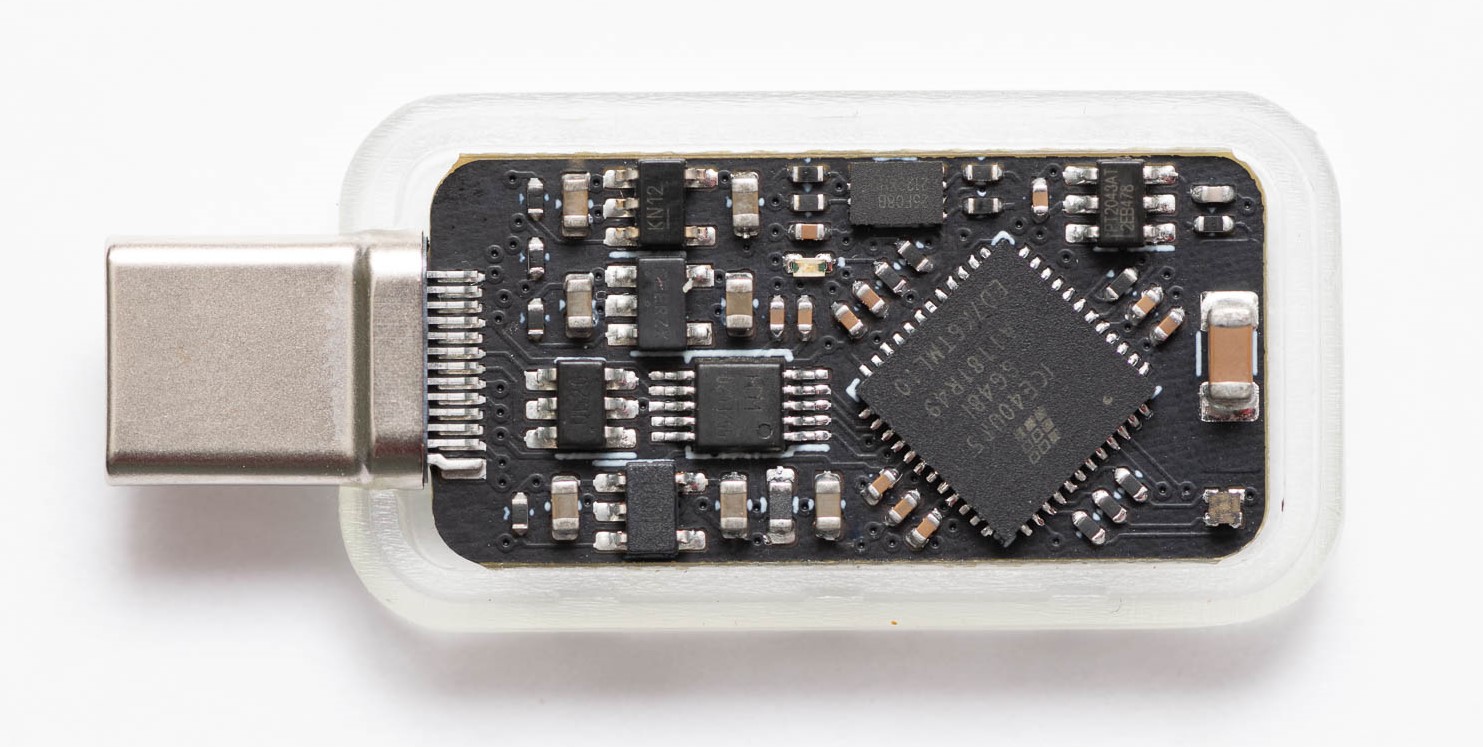- This makes it easier to see if CI fails on hashes (which might be expected during development) or something else.
Tillitis TKey
Introduction
The Tillitis TKey is a new kind of USB security token. What makes the TKey unique is that it allows a user to load and run applications on the device, while still providing security. This allow for open-ended, flexible usage. Given the right application, the TKey can support use cases such as SSH login, Ed25519 signing, Root of Trust, FIDO2, TOTP, Passkey, and more.
During the load operation, the device measures the application (calculates a cryptographic hash digest over it) before running it on the open hardware security processor. This measurement is similar to TCG DICE.
Each TKey device contains a Unique Device Secret (UDS), which together with the application measurement, and an optional User-Supplied Secret (USS), is used to derive key material unique to each application. This guarantees that if the integrity of the application loaded onto the device has been tampered with, the correct keys needed for an authentication will not be generated.
Key derivation with a User-Supplied Secret allows users to build and load their own apps, while ensuring that each app loaded will have its own cryptographic identity, and can also be used for authentication towards different services.
The TKey platform is based around a 32-bit RISC-V processor and has 128 KB of RAM. Firmware can load and start an app that is as large as RAM.
All of the TKey software, firmware, FPGA Verilog source code, schematics and PCB design files are open source. Like all trustworthy security software and hardware should be. This in itself makes it different, as other security tokens utilize at least some closed source hardware for its security-critical operations.
 The TK1 PCB, the first implementation of the TKey.
The TK1 PCB, the first implementation of the TKey.
Getting started
The official website is tillitis.se.
The Tkey can be purchased at shop.tillitis.se.
All documentation concerning the TKey has been migrated to TKey Developer Handbook.
Tkey Device Apps
Offically supported apps can be found at tillitis.se
The source and other projects from us can be found here at our GitHub.
Other known (but not all) projects can be found at dev.tillitis.se.
Other noteworthy links
- Threat Model
- Release Notes
- Quickstart for the DevKit. Initial programming if you have the "old" DevKit.
Note that development is ongoing. To avoid unexpected changes of derived key material, please use a tagged release. Read the Release Notes to keep up to date with changes and new releases.
About this repository
This repository contains hardware, firmware and utilities written as part of the TKey. It is structured as monolithic repository, or "monorepo", where all components live in one repository.
Device and client applications, however, are kept in other repositories here at our GitHub.
Licensing
See LICENSES for more information about the projects' licenses.
All contributors must adhere to the Developer Certificate of Origin.